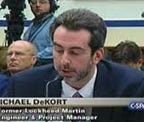Another Fatally Flawed and Reckless “Study” on the “Safety” of L3 and Handover
A link to the study from the University of Nottingham and the RAC Foundation
I would like to give the authors of this study the benefit of the doubt. However, given what they stated here I do not believe I can do that.
“Moreover, the situations in which drivers must regain manual control of automated vehicles may occur unexpectedly and require fast responses, and thus human drivers may be ill-prepared for the transfer of control [1, 5, 6].”
Stating this means they realize L3 may require emergency handover. However, in the study they give drivers a 10 SECOND heads up for those emergencies. At 50mph one goes over 700ft or two football fields in 10 seconds. (This is actually impossible in most time critical or accident scenarios unless the system was clairvoyant.) In addition, the authors never mention there are no legitimate production L3 vehicles on the road today. Nor that there is no requirement for any of them to prove any level of competence. What is out there are systems where they are given misleading “L2” and L3” designations. Misleading because they are all in development using public shadow and safety driving to create these systems. That literally means they use human Guinea pigs or Kamikaze drivers to test these systems. Yes, that means thousands of more people, beyond the seven people killed doing this to date, will be injured and killed for no reason.
While the study mentions time to regain proper situational awareness after being distracted from the AV driving is necessary, and clearly mention use of training and monitor alarm systems to improve that handover, they gamed the testing by excluding time critical scenarios. Many of which are accident scenarios. This leaves the reader with false confidence that all handovers can be made safe. This is reckless and will contribute to avoidable injuries and deaths. This is evident by the totally unrealistic 10 seconds heads up a handover was coming. The test should have gone down to one second and at least 3 seconds. Emergencies and life-threatening accidents happen with far, far less than 10 seconds heads up.
(There is also no use of a full motion simulator. It would be far more realistic had they done so. Without that device the test is lacking motion cues and how motion sickness would affect the drivers.)
There is a bright spot in the report though. Something I assume was not intended to be discovered. The observation that lateral control was diminished even after 10 seconds had passed since the driver resumed control shows the massive problem of handover. Coupled with 10 unrealistic seconds of emergency scenario heads up it is easy to see how reckless handover is. Even with training and monitor and alarm systems. It is obvious that in that crucial and realistic 1–3 seconds of heads up range the real world would actually afford drivers need up to 13 seconds total time to drive properly. How many time critical events or accidents afford this?
Finally, I was unable to discern where the RAC Foundation’s money comes from. However, I see the foundation’s head is Joe Greenwell. Ford is making an autonomous vehicle and uses public shadow and safety driving.
Joe Greenwell CBE the former chairman of Ford UK. Joe Greenwell had previously been: Vice President, Government Affairs, Premier Automotive Group and Ford of Europe; Chairman and CEO of Jaguar and Land Rover; and Vice President, Marketing and Operations, Ford Motor Company.
Please find more information on my POV in my articles below. Including why the use of public shadow and safety driving is untenable. As well as how to resolve the viability and safety issues using DoD/aerospace simulation technology.
Using the Real World is better than Proper Simulation for Autonomous Vehicle Development — NONSENSE
Autonomous Vehicles Need to Have Accidents to Develop this Technology
The Hype of Geofencing for Autonomous Vehicles
SAE Autonomous Vehicle Engineering Magazine-End Public Shadow Driving
My name is Michael DeKort — I am a former system engineer, engineering and program manager for Lockheed Martin. I worked in aircraft simulation, the software engineering manager for all of NORAD, the Aegis Weapon System, and on C4ISR for DHS.
Key Industry Participation
- Lead — SAE On-Road Autonomous Driving SAE Model and Simulation Task
- Member SAE ORAD Verification and Validation Task Force
- Member DIN/SAE International Alliance for Mobility Testing & Standardization (IAMTS) Sensor Simulation Specs
- Stakeholder for UL4600 — Creating AV Safety Guidelines
- Member of the IEEE Artificial Intelligence & Autonomous Systems Policy Committee (AI&ASPC)
- Presented the IEEE Barus Ethics Award for Post 9/11 Efforts
My company is Dactle
We are building an aerospace/DoD/FAA level D, full L4/5 simulation-based testing and AI system with an end-state scenario matrix to address several of the critical issues in the AV/OEM industry I mentioned in my articles below. This includes replacing 99.9% of public shadow and safety driving. As well as dealing with significant real-time, model fidelity and loading/scaling issues caused by using gaming engines and other architectures. (Issues Unity will confirm. We are now working together. We are also working with UAV companies). If not remedied these issues will lead to false confidence and performance differences between what the Plan believes will happen and what actually happens. If someone would like to see a demo or discuss this further please let me know.
